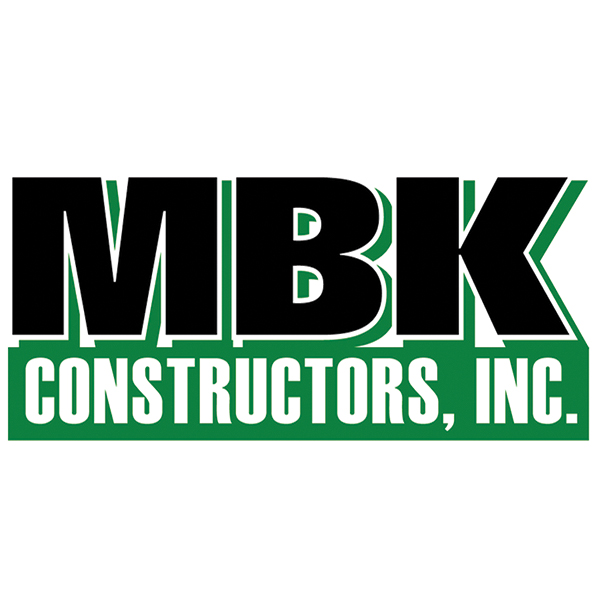Frequently Asked Questions
Does Michigan have an automatic guarantee or warranty on a new home?
Why should I use a licensed contractor vs. building my own home?
Who needs a builder's license / How do I obtain my builder's license?
What is the average square foot price of a new home?
What seasonal maintenance is recommended?
Where can I find help designing a home for persons with mobility limitations?
BUILDERS WARRANTY
Many people, including some builders and Realtors, are under the mistaken impression that there is some sort of automatic guarantee or warranty on a new home. This is not the case.
The misunderstanding comes from a portion of the Builders License Law which states that: "A complaint... must be made within 18 months after completion, occupancy, or purchase, whichever comes later, of a residential and commercial structure." (Sec. 2411 (1) Act 299 of 1980)
The above reference sets a time frame within which any complaint to the Department of Consumer and Industry against a licensee, may be filed.
While Michigan Courts have held that there is some sort of implied warranty of suitability for a particular purpose home, an actual warranty (if any) is between the builder and the buyer.
While many builders have written warranties, others do not. Some warranties are backed by a third party, such as an insurance company and some by the builder him/herself.
Some builder members of the Builders and Remodelers Association of Greater Ann Arbor use the Residential Construction Performance Guidelines for Professional Builders and Remodelers of the National Association of Home Builders as the standard to which they warranty their work. Return to top
ADVANTAGES TO HIRING A LICENSED CONTRACTOR
Your home is probably the largest investment of time, money and effort you will make in your lifetime. Don't waste precious investment because of trying to save a few dollars here and there or cutting corners by using a "friend" to build your safe haven.
Do your "homework" before considering building, buying or remodeling! Whatever you decide to do, use a licensed contractor. They are knowledgeable in industry standards, new codes and regulations, building mandates and requirements to be re-licensed. And, as a member of the Builders and Remodelers Association of Greater Ann Arbor subscribe to a Code of Ethics that means a lot to you!
Still considering being your own contractor? Ask yourself the following questions:
• Do I have the time to learn the home building business?
• Do I have the time to find and screen subcontractors?
• Am I willing to risk the largest single asset that I will probably own in my lifetime?
• Am I being misled by information that says I can save thousands of dollars?
• Does it take into account the added savings an experienced, licensed contractor can provide vs. an unlicensed builder?
• Am I aware that Realtors have a very difficult time selling owner-built homes because the quality may be uncertain and the design very individualistic?
• Do I know that building inspectors have a real concern for homes built by home owners because they often have a hard time adhering to building codes and they take a lot of time to coach through the process?
• Am I aware that after the home is built, I am the one responsible for all the warranty work on my home?
• Do I have sufficient resources to see the job through to completion - whenever that might be?
If you decide to work with a professional, be sure your builder:
• Is properly licensed
• A member of the Builders and Remodelers Association of Greater Ann Arbor
• Subscribes to the Association's Code of Ethics
• Responsive to the Association's dispute resolution process
What to ask for:
• Homeowner references, and talk to the references
• A copy of the builder's contract and warranty program to review
• A schedule on the design and construction process
• Insurance information
• References for lenders and suppliers to interview Return to top
WHO NEEDS A BUILDER'S LICENSE / HOW DO I OBTAIN A BUILDER'S LICENSE?
In Michigan, licensing falls into one of three categories:
1. Residential Builder is a person or firm who for a fixed sum, price, fee, percentage, valuable consideration or compensation, other than wages for personal labor only, undertakes with another, or offers to undertake with and purports to have the capacity to undertake with another for the erection, construction, replacement, repair, alteration, addition to, subtraction from, improvement of, wrecking of, or demolition of a residential structure or a person who manufactures, assembles, constructs, deals in or distributes a residential structure which is prefabricated, precut, packaged, or shell housing a person who erects a residential structure except for the person's own usage or occupancy on the person's property.
A Residential Builder may practice any or all of the covered trades and may build.
Note: a Residential Builder may not do plumbing, electrical or mechanical work. The licenses for these trades are from the Department of Labor.
2. Maintenance and Alteration Contractor - A person or firm licensed in one or more of the following trades: Basement Waterproofing, Carpentry, Concrete, Excavation, Gutters/Downspouts, House Wrecking, Insulation, Masonry, Painting/Decorating, Roofing, Siding, Storms/Screens, Swimming Pools, Tile & Marble
A Maintenance and Alteration Contractor may only practice those trades listen on his/her license and my not build.
3. Salesperson - An employee or agent of a builder or contractor who sells the goods or services of the builder/contractor.
Basically any person or firm who does construction or maintenance type work on a residential structure, in excess (labor and materials combined), must be licensed. One exception is a person who engages solely in the business of performing work and services under contract with a residential builder or contractor licensed under this article (in other words, a subcontractor who is hired by the builder or contractor)
HOW DOES A PERSON GET A BUILDER'S LICENSE?
1. Application for Test - Apply to PSI Examination Services (800) 733-9267
2. Testing - A person takes and passes both parts of the licensing exam:
Part I - The Business and Law Examination
Regulator and Statutory Requirements
Financial Management
Contract Management
Project Management
Safety, Personnel and Payroll
Insurance, Bonding & Liens
Part 2 - The Practice/Trade Examination
Excavation and Site Work
Rough Carpentry
Finish Carpentry
Concrete and Rebar
Roofing
Masonry
Diverse Specialties
3. Application
Having passed both parts of the license examination, a person submits a license application to the State of Michigan. The applicant must also cause a credit report to be furnished directly to the State credit reporting agency.
The current fee is $95 which consists of $30 for the first years license, $15 Administrative Fee and $50 contribution to the Construction Lien Recovery Fund.
4. Licensure
When the State of Michigan has processed the application, a license will be issued and mailed to the applicant. That first license is good for one year, expiring on May 31. Renewals are for two years. Return to top
SEASONAL MAINTENANCE GUIDE
Spring/Summer
Inspect, clean or repair furnace filters and range filters
Floor drains - pour water in to prevent sewer gas odor
Vacuum System - empty, clean or replace filtration system
Windows - wash, clean, lubricate, if necessary for smooth operation, install screens
Roof gutters - clean out debris, check outlets, unclog
Yard - rake out, de-thatch, fertilize, or contract with yard maintenance firm
Sprinkling system - start up system, check all zones & heads
Lawn mower - tune up, change oil, sharpen blades, or contract with yard maintenance firm
Check batteries in smoke detectors (do spring & fall with changing of clock for daylight savings)
Caulking - inspect and re-caulk where necessary
Check walks & driveway for heaving that may have occurred during spring thaw frost coming out of ground
Check roof for loose shingles and flashings
Drain some water out of water heater through lower boiler drain to remove sediment
Remove rubbish, recycle newspaper, clean out basement and garage
Pump septic tanks ever 4 years or less depending on capacity of system. Consult with service.
Clean wood burning chimneys
Defrost freezer (do not let more than 1/4" of ice accumulate)
Fall/Winter
Heating & cooling equipment - tune up, change filters
Floor drains - pour water in to prevent sewer gas odor
Windows - remove and store screens
Roof gutters - clean out debris, check outlets
Yard - rake leaves, fertilize, protect sensitive plantings from upcoming cold weather
Sprinkling system - shut down, drain and winterize
Snow removal - tune up snow blower, install plow and chains on tractor, have snow shovel and safety salt available, contract with snow removal service
Smoke detectors - change batteries
Check antifreeze in all vehicles or equipment with radiators
Remove hoses from sillcocks
Drain some water out of water heater through lower boiler drain to remove sediment
Check electrical box to insure all breakers are on or fuses are intact
Remove rubbish, recycle newspaper, clean out basement and garage
Lubricate overhead door openers
Inspect and clean sump pump Return to top
WHAT IS THE AVERAGE SQUARE FOOT PRICE OF A NEW HOUSE?
We have no easy answer to this question, because it depends on the homeowner's choices. In order for a builder to answer this question, he or she would need to ask the homeowner to answer questions like: "What kind of cabinetry will be used? What will be the quality of the carpeting, flooring, moldings etc.?" We are sorry we are unable to answer this question as an association. Buying a house by the square foot would be like buying a car by the pound. Is it a Chevy or is it a Mercedes?
Your best bet is to talk to your builder, let him or her know what kind of a house you are considering and what kind of materials you are looking to use. That builder can then quote you an average price for that particular house.
BRAG ANN ARBOR LIBRARY
The BRAG Ann Arbor library is an archive with information relating to all areas of the building trades, from sales & marketing to business and construction.
The library consists of volumes of information in the form of books, videos, magazines, disks, pamphlets and more. Stop in or contact us if you are interested in exploring the library. Return to top
MOBILITY: LIFETIME DESIGN and CAPS (Certified Aging-In Place Specialist)
Every year, millions of Americans build a new home - one of the most exciting and satisfying projects a family can undertake.
Many people who builde a new home give little thought to how it will adapt to their needs as they age. For example, millions of homes are built each year with all of the bedrooms on a upper floor, and only a small half bath on the main. If a member of the family becomes mobility impaired, either through an accident or the natural aging process, the house no longer suits the family's needs.
There is no reason why a disability, be it permanent or temporary, needs to force a family to either drastically alter their home, or in an extreme case, build a new home.
The Lifetime Design concept was developed to show how homes can be constructed to adapt to the changing needs of the people who live there. Homes constructed using Lifetime Design elements do not look institutional and when introduced into the overall design of the home, these elements can acutally add to the beauty of the new home.
What is Lifetime Design?
Lifetime Design is a set of specifications that, when applied to a home plan, will create a home that can be lived in or visited by persons with mobility limitations. The specific criteria are listed below.
Lifetime Design Criteria:
Accessible entrances and main floor doorways must be at least 36 inches wide
Main floor hallways must be at least 42 inches wide
There must be at least one bedroom and a bathroom on the first floor with a doorway at least 36 inches wide. The bathroom must have a minimum 48 inch turning radius (standard wheelchairs need a 60 inch turning radius, motorized wheelchairs need a 72 inch radius)
The kitchen must be accessible with a minimum 48 inch turning radius
There must be accessible electric switches on the first floor. Recommended height is 48 inches maximum. Outlet height should be between 18 and 24 inches.
You do not need to incorporate all of these criteria into your new home to enjoy the benefits of Lifetime Design. If you carefully examine the criteria you will notice that the main concern s space. Simply starting with wider hallways and doorways is an excellent beginning. Add in a bedroom and full bath on the first floor and you are well on you way to a home you can live in for a lifetime.
Creativity is key in building a Lifetime Design home. You may decide that you really don't want a bedroom on the first floor. The answer may be to have a home office/den that could be converted to a bedroom should the need arise.
Make the main floor bathroom larger than you might have originally considered, following the minimum criteria listed above. Then, should the need arise, you can convert this bathroom to have the fixtures that you would need for a person with a wheelchair.
Lifetime Design homes are beautiful, cost effective, and extremely practical. If you plan the home efficiently you won't need to add a great deal of space to the home to incorporate Lifetime Design Elements.
The Remodelers Council of Greater Ann Arbor (within BRAGAA) are ready to help you build your new Lifetime Design home. They can offer a list of resource people you can contact regarding the Lifetime Design elements.
We encourage you to review our list of members that are Certified Aging-In-Place Specialists. For more information on Lifetime Design homes or CAPS, please call the BRAG Ann Arbor at 734-996-0100. Return to top








